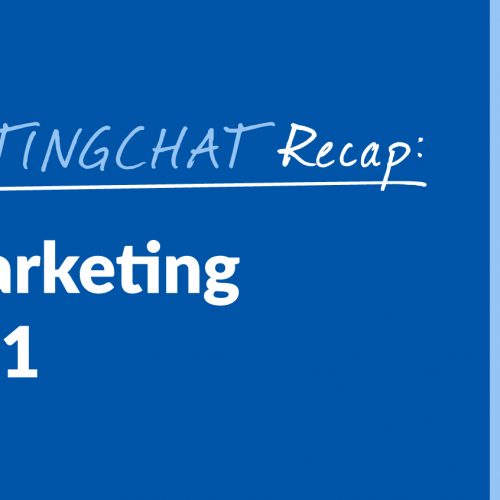#ContentWritingChat Recap: Content Marketing Strategy 101 with Julia McCoy
Do you have a content marketing strategy in place for your brand? If not, it’s time you create one! However, you might be wondering how to get started and that’s where we come in. In this week’s #ContentWritingChat, we talked all about the basics of creating a content marketing strategy of your very own. Keep reading for the recap! #ContentWritingChat Recap: Content Marketing Strategy 101 with Julia McCoy Join us for #ContentWritingChat on Tuesday, June 20th at 10 AM Central Time with our CEO, @JuliaEMcCoy! pic.twitter.com/RGlMdp1ndP — Express Writers (@ExpWriters) June 13, 2017 Our guest host this week was our very own CEO, Julia McCoy. As a content marketing expert herself, it’s no surprise that she had some amazing advice to share with everyone. Q1: What is a content marketing strategy and why is it important for today’s brands? To kick off the chat, we asked everyone to share their own definitions of a content marketing strategy. We also wanted to find out how important they felt it was to have a strategy and why. Check out a few of the responses we received: A1 A content marketing strategy drives the guidelines, creation, execution and tracking of your content marketing. #ContentWritingChat — Julia McCoy ? (@JuliaEMcCoy) June 20, 2017 A1b A content marketing strategy is absolutely necessary to achieve ROI and make goals happen with your content. #ContentWritingChat pic.twitter.com/08Ou9oaKO0 — Julia McCoy ? (@JuliaEMcCoy) June 20, 2017 As Julia said, a strategy will drive the guidelines, creation, execution, and tracking of your content marketing. She knows it’s necessary if you want to achieve ROI and make goals happen with the content you create. A1) Content Marketing Strategy is crafting a consistent schedule of content to tell your brand’s story to win customers. #ContentWritingChat — Kyle Murray (@TheKyleMurray) June 20, 2017 Kyle feels it’s all about crafting a consistent schedule of content to tell your brand’s story to win over your customers. A1: A CM strategy is an established process for why you’re doing what you’re doing and guidelines for how you’ll do it. #ContentWritingChat pic.twitter.com/7YjrYkLvcn — Annaliese Henwood? (@MktgInnovator) June 20, 2017 Annaliese said having a strategy in place gives you an established process for why you’re doing what you do, plus guidelines on how to do it. A1 It’s knowing what to say, how to say it, where and to whom. Having a plan and executing it. #ContentWritingChat — Maria Tereza Dickson (@terezadickson) June 20, 2017 As Maria pointed out, having a strategy is partly about knowing what you want to say, how to say it, where to say it, and who you’re saying it to. These are all essential things to figure out. A1a: It’s your road map from where you are to where you want to be. #ContentWritingChat pic.twitter.com/DTkM1mv276 — Jeff Reno(e) ? (@Renoe) June 20, 2017 This is a great way to look at it! Jenn said your strategy is your road map from where you are to where you want to be. It’s important to set goals and create a plan of action to help you get there. Q2: Before you can begin creating content and planning your strategy, what do you need to figure out? Now that you know what a content marketing strategy is, you’re probably feeling ready and inspired to create one of your own. But before you can get started, there are a few essential things you need to figure out. Take a look at these tips: A2 First, figure out what makes you different than everyone else. I’ve defined that as a CDF: https://t.co/UUj8jJWyZP #ContentWritingChat pic.twitter.com/PX9WyheRU0 — Julia McCoy ? (@JuliaEMcCoy) June 20, 2017 A2 Secondly, focus on discovering your audience with these 4 keys (which I teach upcoming in https://t.co/SWusmMGFiC). #ContentWritingChat pic.twitter.com/cg8zpRBBU6 — Julia McCoy ? (@JuliaEMcCoy) June 20, 2017 Julia’s first tip is to figure out what makes you different from everyone else. When you know what your Content Differentiation Factor (CDF) is, you can embrace that and stand out from the crowd. (Read her Search Engine Journal article she linked to if you want to learn more!) Next, she encourages you to discover who your audience is. She shares four key tips in the graphic she included with her post. You can learn about this more in-depth in the content course she’s creating. A2: Your ideal audience! What do they need? Where do they hang out? Where do they CONVERT? Need to know that first.#ContentWritingChat https://t.co/zub1Uhj19c — ThinkSEM (@ThinkSEM) June 20, 2017 Sarah knows it’s important to know key information about your audience. Who is your target audience and what do they need? Where do they hang out? What will make them convert? This is all important to figure out so you can create content accordingly. A2: You need to figure out your audience. Learn who they are then you can determine what type of content to create. #contentwritingchat — Netvantage Marketing (@netvantage) June 20, 2017 Lexie agrees that it’s crucial to know your audience first. Once you know who they are, you can create the type of content they need in their lives. A2: You need to know why you want to do this. What are your goals? What are you looking to achieve from your content? #ContentWritingChat — Annaliese Henwood? (@MktgInnovator) June 20, 2017 Don’t forget to figure out what your goals are. When you know what you want to achieve, it’s going to dictate the end result of your content. A2) What’s your goal? Brand awareness? Conversions? What is it about your brand that your demo NEEDS to know? #ContentWritingChat — Kyle Murray (@TheKyleMurray) June 20, 2017 Kyle also agrees that it’s important to know what your goals are ahead of time. Are you trying to increase brand awareness or land conversions? Is it something else? Figure that out beforehand so you can create the content that will help you get there. A2: Know what success looks. Benchmarks? Goals? Objectives under goals? Tactics under objectives? #contentwritingchat — ??Jonathan Payne (@SocialGamePlan) June 20, 2017 … Read more







